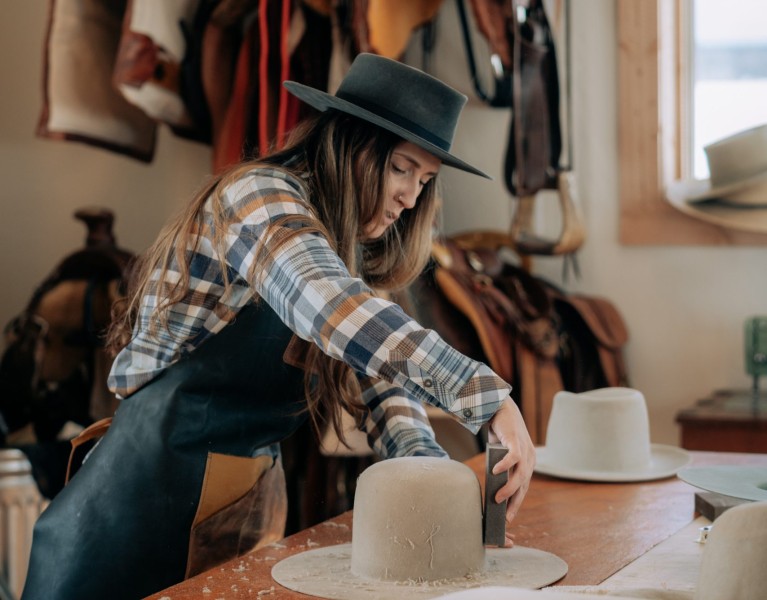
Interview with Lianna Freese, Custom Hatter Based in Montana
Table of Contents [Show]
KÜHL chats with Lianna Freese, owner of Sun River Hats, to learn more about her custom hat making process.
Written by Sam Brown. All photos by Mak Crist.
Beyond the Maker
This new series from KÜHL goes beyond getting to know an artist’s work and what inspires them. We dive deeper into their origin stories and struggles to learn how they cope with failure, critics, and success, yet still find time to do the things they love. Born in the mountains, raised in the workshop – these are their stories.
The Hatter
There aren’t many girls who grow up in the west that don’t love horses. Lianna just never stopped loving them.
Growing up in a family of seven, Lianna roamed the amber plains of Washington looking for every opportunity to ride a horse. Her earliest memory is riding her grandpa’s horse, who was a packer along with her great uncle. From a young age she’d follow her grandpa in a creaking leather saddle to go fishing around their home in Oregon.
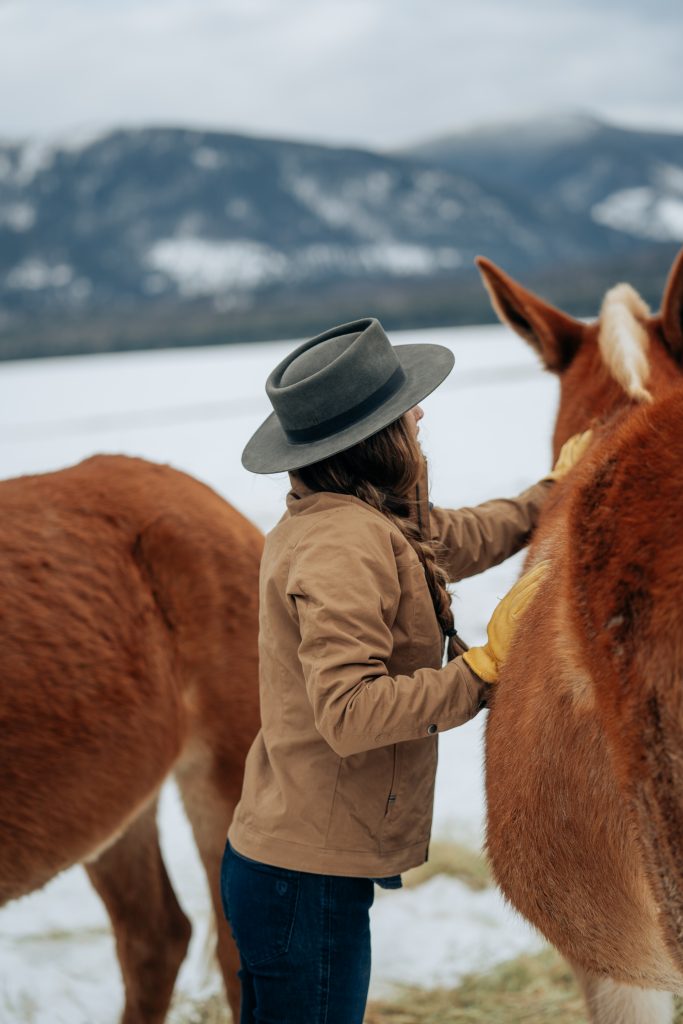
Although her parents didn’t share her passion for horses, that didn’t keep her from seeking a life guided by their influence and grace.
When her grandfather passed away at age 11, her family inherited his horse. They reluctantly brought him home but quickly sent him away after her sister and her friend got bucked off.
Lianna still looked for every opportunity to ride a horse. She had friends with horses, she rode horses at summer camp – she didn’t want to get off a horse.
She now lives in a small town in northwest Montana with her partner who shares this passion. They run a packing operation together in the rugged mountains that surround their home. Her partner, Chris, works in the winter to support his love of packing. In the summer they volunteer their time, resources, and animals to support trail crews in the Bob Marshall Wilderness and beyond.
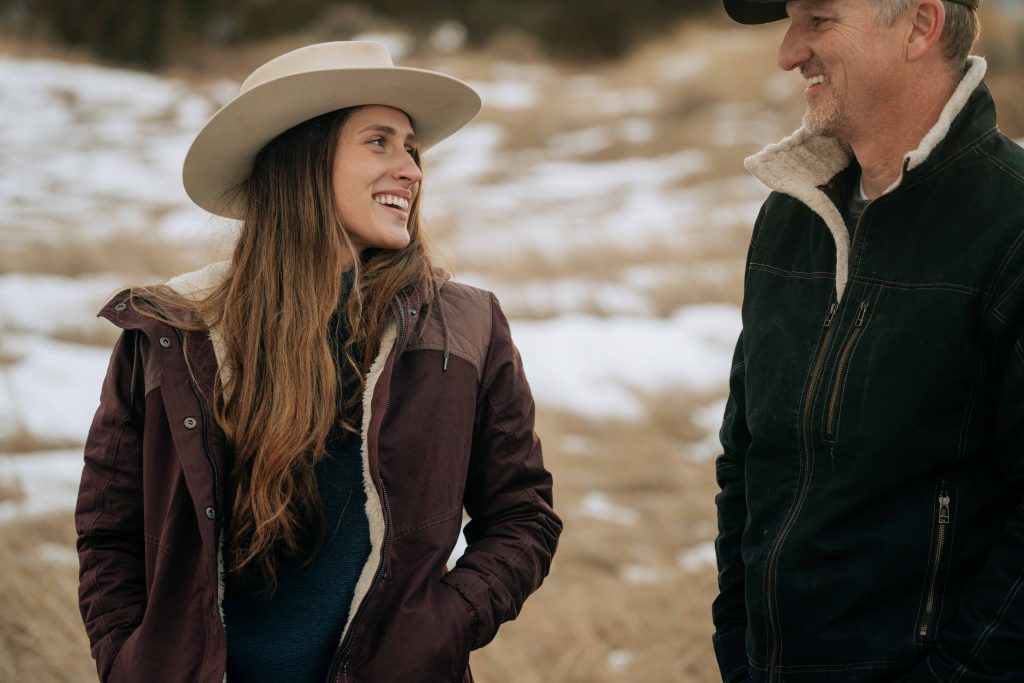
She helps with these endeavors out of pure love and dedication to the animals, the rugged places they bring her, and the things they can teach her.
Whether it’s following her grandpa’s lead in Oregon at a young age, training her mustang named Daphne, or leading a string of mules in “The Bob”, you’ll always find her brown eyes tucked under a cowboy hat.
She’s collected these hats over the years. Wide ones, short ones, floppy ones, tall ones – you name it, she’s probably worn it, owned it, or admired it.
Cowboy hats first caught her eye at a young age, and she’s been adding to her collection ever since. Protection from the elements, fanning fires, watering your horse, or keeping your head warm, a good hat in the backcountry, she was drawn to their character and the stories they could tell.
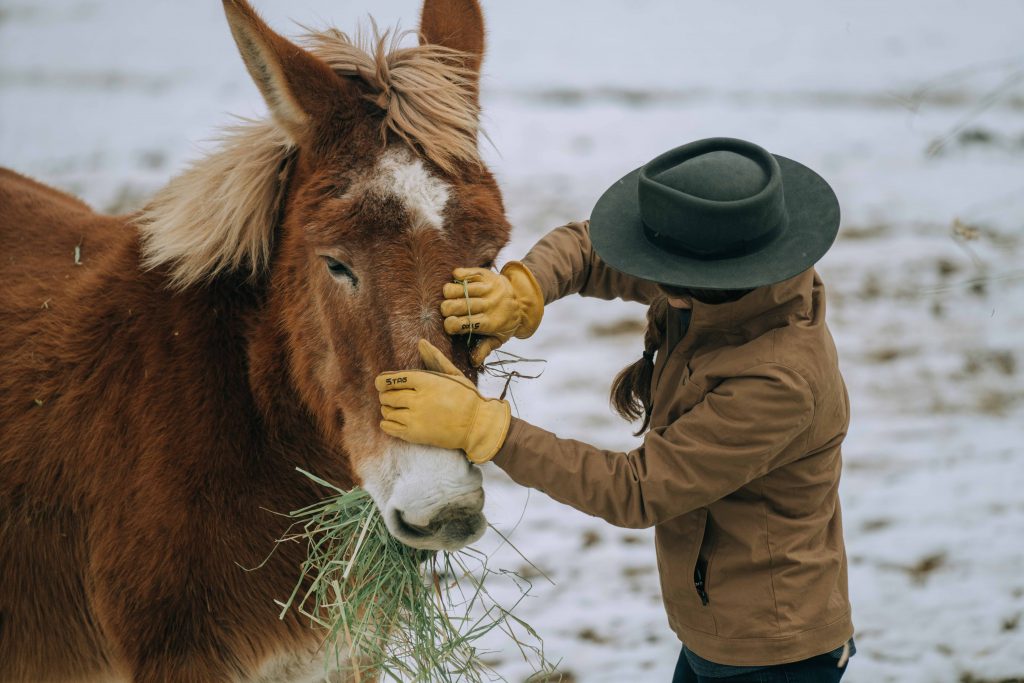
Seeking the Craft
Lianna always wanted a quality cowboy hat but just couldn’t justify the high cost to buy one. She found many of the hats she loved in thrift stores, each one adorned with the character of a life well-lived. Her partner eventually gifted her a beaver felt hat, which ignited her interest in the history and craftsmanship in cowboy hats built to last.
Lianna eventually found herself at a turning point in her life. With two young girls to support and a weaning interest in her day job, she was looking for an artistic craft to keep her hands and her mind busy.
She dabbled in jewelry making but eventually wandered back to her growing collection of hats – dusty, sweat stained, but beautiful. Could she make some herself?
At that time, there weren’t a lot of people making cowboy hats and the ones that were, weren’t really willing to share their craft when she spoke to them. She searched for someone to take her as an apprentice but eventually gave up, no one was interested.
She found odd jobs to keep her busy in the meantime. After a year of searching, Lianna eventually found someone giving classes in New Mexico. She headed south to hone her hatter skills and came back with the basic knowledge and skills to make a hat.
The act of hat making isn’t necessarily hard. But neither is painting. Yet it takes an eye for detail, proportions, and design to walk away with something that looks good and will function just as well. Lianna’s long-time obsession with cowboy hats gave her a head start. She already knew what worked, what she liked, and what materials she wanted to use.
After the basic hat making class Lianna continued to broaden her education through videos and books. She was even able to glean some information from local hatters on this mysterious craft.
She made hats for herself, for friends and family members; each one lovingly hand crafted with basic tools she had collected. She was on to something. The feedback on the hats she made was positive, so she invested in more tools and set up her own studio space.
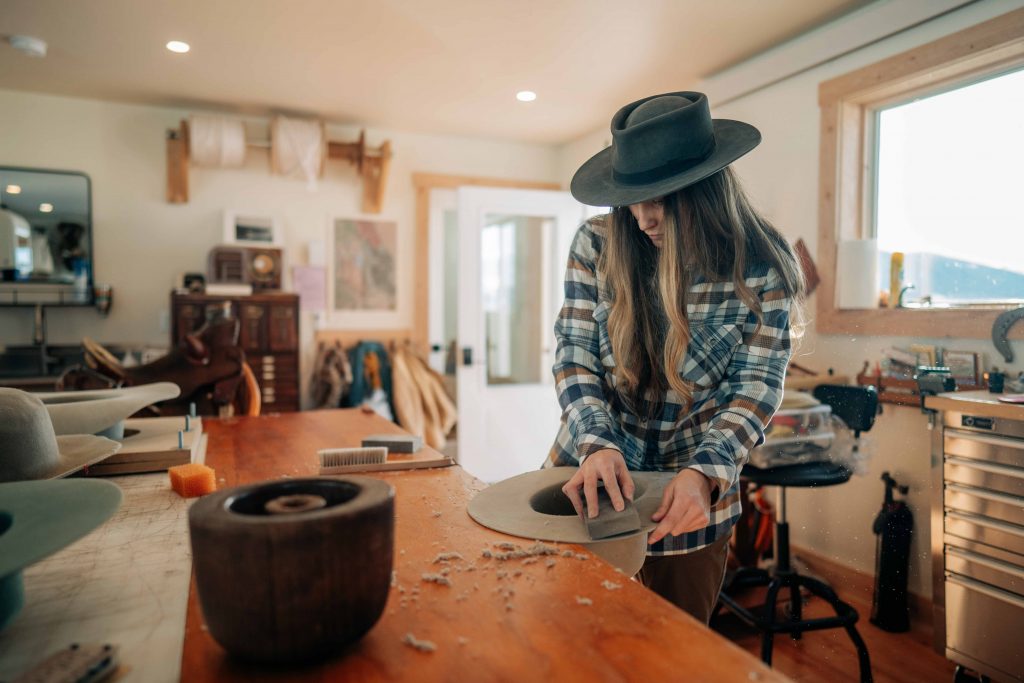
The Process
Traditional cowboy hats go through a series of steps to become a finished hat. Some hatters add steps, some skimp them, but generally they all follow the same basic framework to go from beaver felt to hat.
Traditional beaver felt hats begin as stiff sheets of felt. Though a process of steaming, ironing, shaping, and sanding the hat is gently coxed into its final form.
Blocking, sanding, ironing, sewing – Lianna does it all herself. She sews the sweat bands by hand because it feels more traditional. Goat leather and silk on the interior of the hats give them a durable yet elegant feel.
Beaver felt is the preferred material for durable cowboy hats. Hatters like the water repellent and stiff characteristics of beaver felt. When the hat loses its shape, it can easily be steamed back.
Some hatters use a beaver felt/hare blend, but this material doesn’t hold its shape well. When the wind carries the rain sideways and you’re 10 miles from the truck, you want a beaver felt hat.
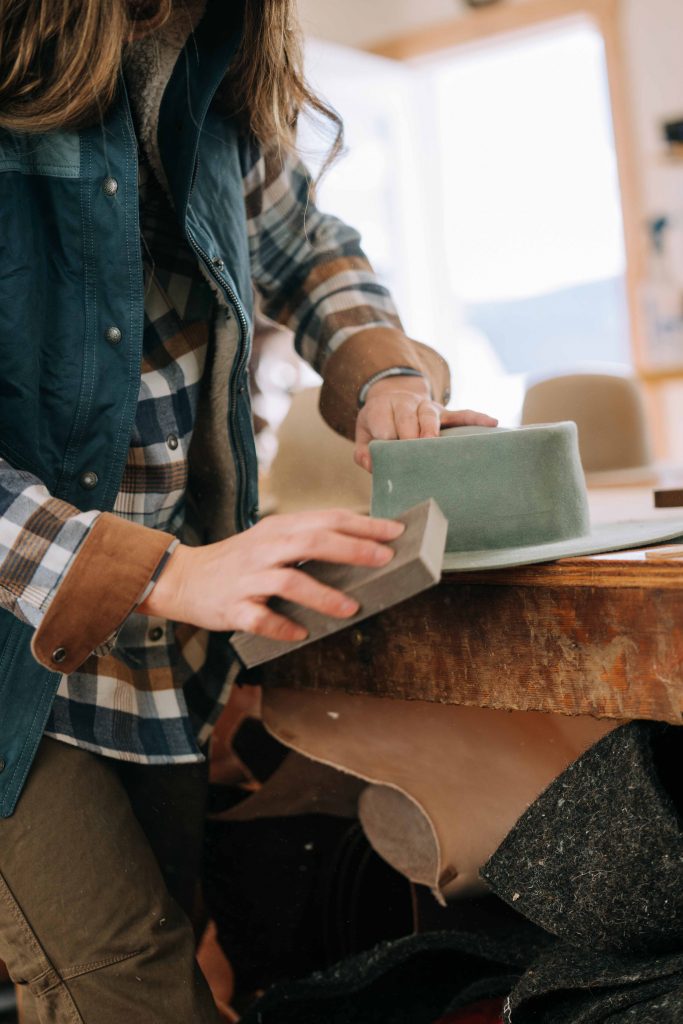
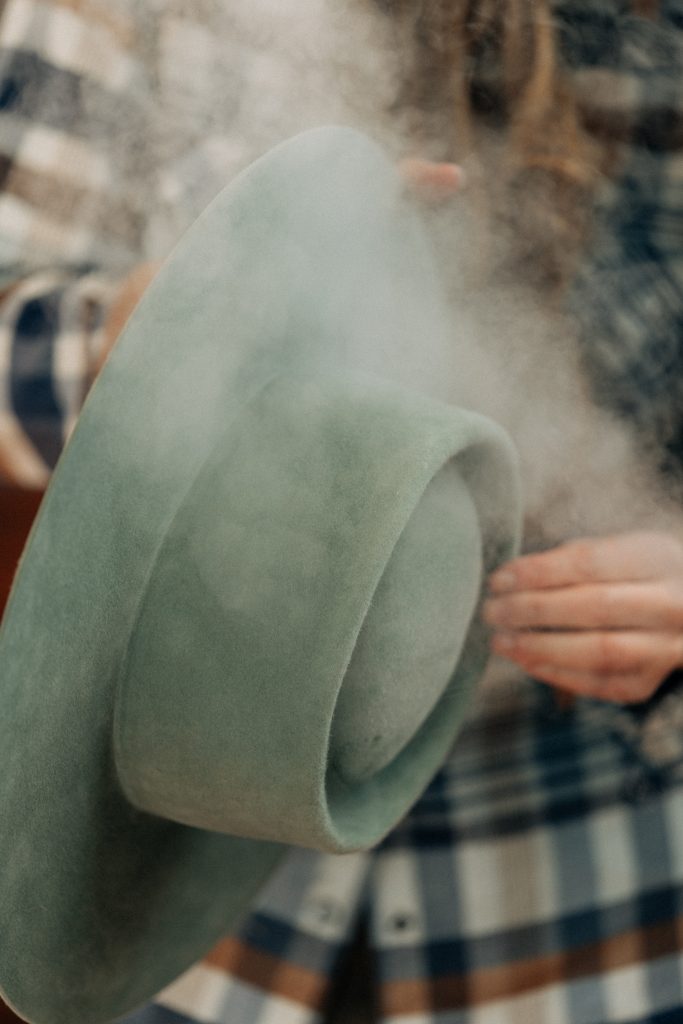
Lianna makes about two hats a month for her clients. She could make more hats if she wanted to, but she insists on keeping her process intentional, not transactional.
When clients approach her, she opens up a conversation. This hat will be with them for the rest of their lives, so she wants to get know her clients, how they want to use the hat and what their expectations are. She guides their decisions, ask about their hat preferences or styles they like.
The job of the hatter is to match the hat with their client’s needs and wants, which Lianna takes seriously. She gets to know their clients, asks for selfies, interests, and dislikes. Lianna also knows what works and how to steer her clients in a certain direction.
She finds inspiration in these moments and the people she encounters. She doesn’t like to draw and might pause a movie to admire a certain hat. A “crazy amount of screenshots” and an endless curiosity on how to make a better hat guides her craft. The west, and its spirit, is engrained in the people and places where Lianna spends most of her time and she uses this as inspiration when she’s making hats.
Carrying on Tradition
Remarkably, the traditional cowboy hat making process remains unchanged since the first one was made by J.B. Stetson in 1865. Many modern hatters even use the same materials, techniques, and tools to make hats as they did more than 150 years ago.
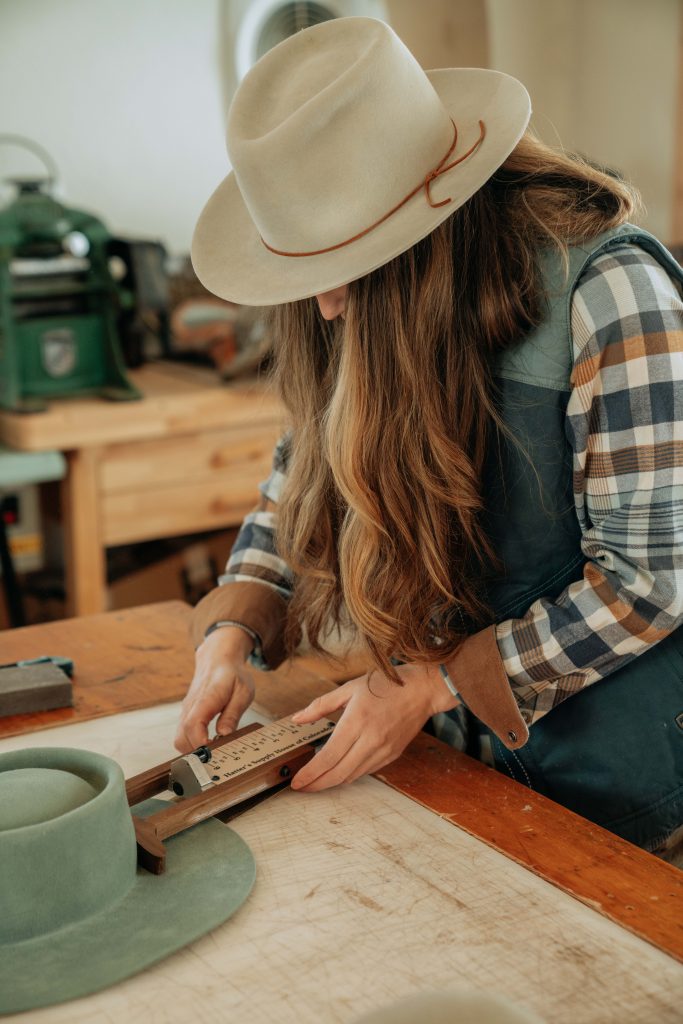
Traditional cowboy hat shapes vary based on location, climate, tradition, face shape and personal preference. Hats were personalized throughout history to meet certain requirements – Mexicans made their brims wider to provide more shade, western ranch hands turned their brims up so the lasso wouldn’t catch the hat.
There is no such thing as an “original hat shape.” It’s all been done before. An experienced hatter shapes the creases in the crown and the brim, then selects the band materials and lining based on their personalized touch.
Beyond the Hatter
Lianna learned early on that she needed diversity in her daily routine. She enjoys the flexibility that hat making gives her. She can gather her hat making supplies and head west to Oregon when it’s her time to be with her girls, ages 10 and 12.
When she needs a break she heads to the mountains just outside her home with her partner – no need to give HR two-weeks notice. At the risk of getting burned out on the one thing she loves (hat making), she manages a few side hustles.
She’s currently training her adopted mustang, Daphne – a wild red/orange beauty that roamed BLM land until she was captured. Lianna’s already been thrown off her once, so she’s taking it slow.
At the end of the day, she’s following her childhood dreams and that’s all that matters. As she roams the fragrant foothills, valleys and mountains in Bob Marshall Wilderness Complex, she isn’t looking for answers. She’s found a sense of purpose and place some people spend their entire lives looking for.
Lianna embraces the sometimes brutal, yet elegant balance of horse packing in northern Montana. Not for a paycheck, but for the love of the west, its culture, and tradition. A profound love for the craft and skill of this occupation anchors her in this timeless place.
She feels lucky to have had the opportunity to learn how to make such a symbolic tool that represents the heritage of her past and the animals she loves. And she’s looking for ways to share more of it. Keep an eye out for her website which will feature handmade hats ready for your next adventure.
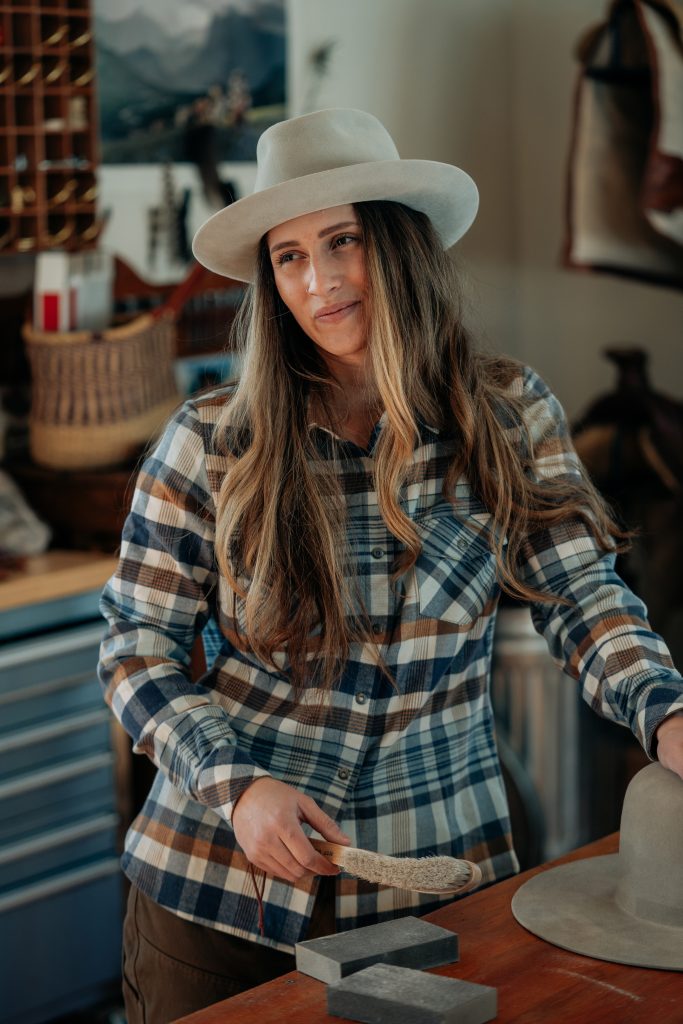
To learn more about Sun River Hat Co. and Lianna's endeavors, you can follow her on Instagram.
Shop Lianna's Look
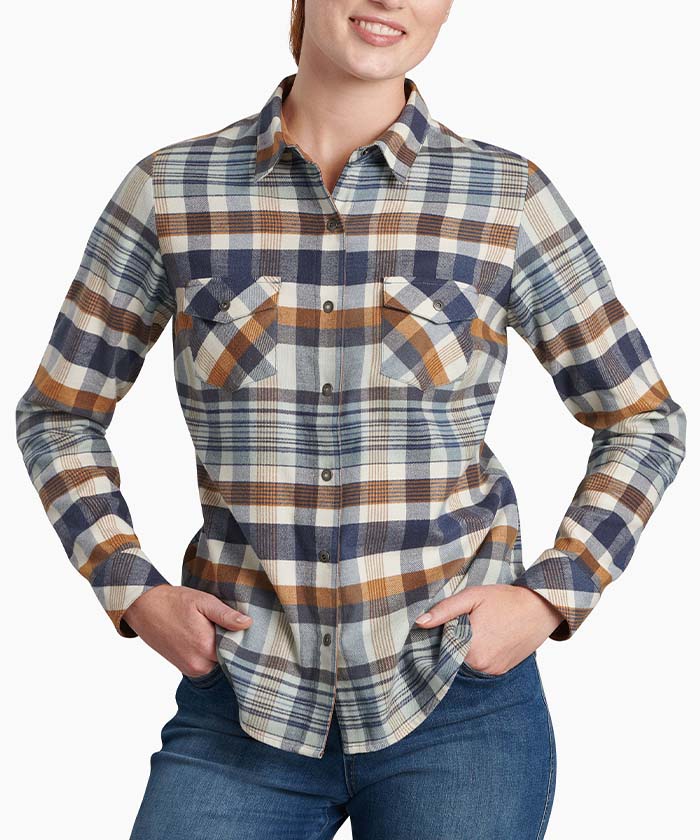
TESS™
FLANNEL
$79.00
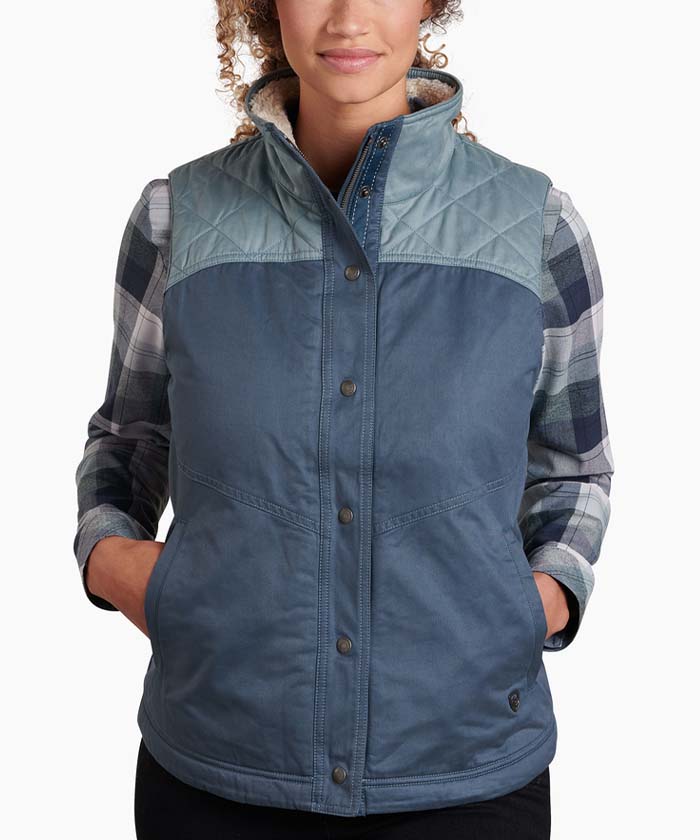
CELESTE™
LINED VEST
$129.00
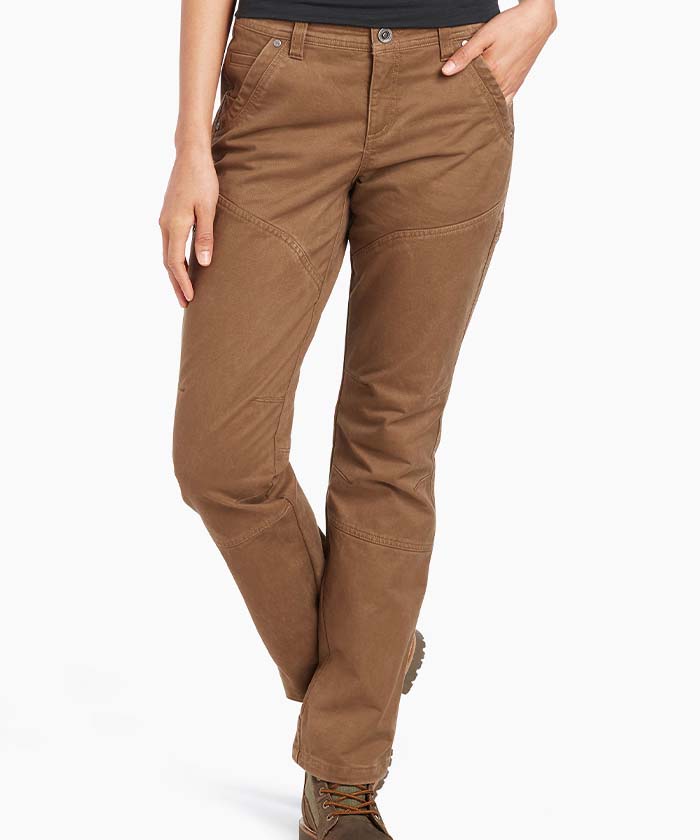
RYDR™
PANT
$89.00


